
THE Best Beloved is a scientist through and through, and he has an obsession about frogs and toads. Occasionally I try to distract him by saying “Ribbit, ribbit”, but he just ignores me! He’s come up with some interesting information on the differences in the diets of frogs and toads, though, which I’ve found interesting.
The adult common frog (Rana temporaria), described as an unspecialised and opportunistic predator, eats what’s available and consumes all moving objects large enough to be seen and small enough to be swallowed. It only sees moving prey that’s close by, because it has poor eyesight. A static fly within easy striking distance is not visible to a frog, unless the fly moves. Common frogs will also miss an earthworm that’s 10in (25cm) away. However, if one comes within 3in (7.5cm), they will almost certainly see it and take it.
When the stomach contents of common frogs were analysed, beetles, flies and gastropods were found to make up about 60% of their diet, in roughly equal measures. It seems that the common frog helps to keep slugs down in our gardens. One study found slugs in the stomachs of 85% of the frogs sampled.
Diese Geschichte stammt aus der January 23, 2021-Ausgabe von Amateur Gardening.
Starten Sie Ihre 7-tägige kostenlose Testversion von Magzter GOLD, um auf Tausende kuratierte Premium-Storys sowie über 8.000 Zeitschriften und Zeitungen zuzugreifen.
Bereits Abonnent ? Anmelden
Diese Geschichte stammt aus der January 23, 2021-Ausgabe von Amateur Gardening.
Starten Sie Ihre 7-tägige kostenlose Testversion von Magzter GOLD, um auf Tausende kuratierte Premium-Storys sowie über 8.000 Zeitschriften und Zeitungen zuzugreifen.
Bereits Abonnent? Anmelden
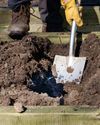
To dig or not to dig?
Should we be carrying out a full dig on plots now? Bob considers the pros and cons of the 'autumn dig' debate
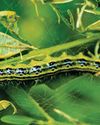
The box ball blues
As if his beleaguered box hadn't already taken a beating, Toby now has to deal with some hungry box caterpillars

Save your own seeds
Masterclass on: seed saving
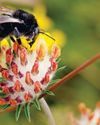
Strange sightings
Three unusual insects turn up in Val's garden in one day

A bolt from the blue!
Cornflowers are perfect for garden and vase
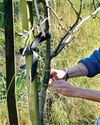
Winter moth prevention
Ruth shows you how to avoid maggoty tree fruits

Create a winter container
There are as many options as in summer
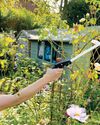
Lightweight gardening tools
AS well as being good for our mental health, gardening is also great exercise.

Autumn price round-up
AG finds better bargains in lesser-known brands
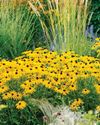
Rudbeckias
Rudbeckias are ideal for sunny summer patios and borders, with some able to survive our coldest winters